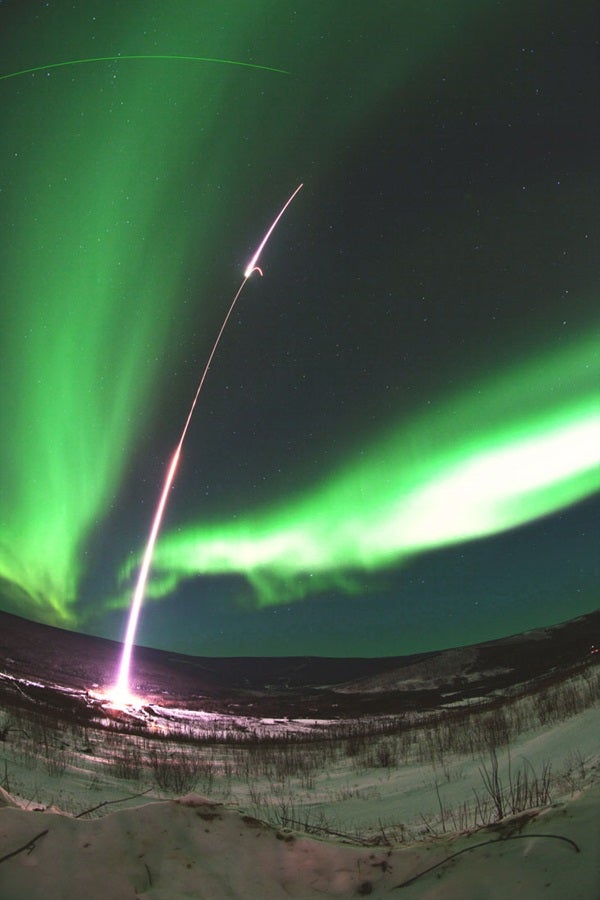Funded by NASA, the Magnetosphere-Ionosphere Coupling in the Alfvén resonator (MICA) mission sent a 40-foot Terrier-Black Brant rocket arcing through an aurora 186 miles (299 kilometers) above Earth. The rocket sent a stream of real-time data back before landing about 200 miles (322km) downrange shortly after the launch.
Instruments onboard, including those built at UNH, sampled electric and magnetic fields, as well as charged particles in Earth’s upper atmosphere (ionosphere) that get sloshed back and forth by a specific form of electromagnetic energy known as Alfvén waves. These waves are thought to be a key driver of “discrete” aurorae — the typical, well-defined band of shimmering lights about 6 miles (10km) thick and stretching east to west from horizon to horizon.
The mission involves collaborators from Cornell University in Ithaca, New York; Dartmouth College in Hanover, New Hampshire; the Southwest Research Institute in Boulder, Colorado; the University of Alaska Fairbanks; and the University of Oslo in Norway.
According to Lessard, the Alfvén resonator is a structure in the ionosphere that acts like a guitar string when “plucked” by energy delivered by the solar wind to Earth’s magnetosphere high above.
“The ionosphere, some 62 miles (100km) up, is one end of the guitar string, and there’s another structure over 1,000 miles (1,600km) up in space that is the other end of the string. When it gets plucked by incoming energy, we can get a fundamental frequency and other ‘harmonics’ along the background magnetic field sitting above the ionosphere,” Lessard said.
The Alfvén resonator is a narrow, confined area of space — a channel that is perhaps several hundreds of miles tall but only 6 miles (10km) wide. It is hypothesized that energy from the Sun accelerates a beam of electrons producing aurorae and also increasing the overall electrical conductivity within the channel. Understanding how the ionosphere participates in providing the downward current is a critical component of understanding magnetosphere-ionosphere coupling.
“The process turns on an auroral arc, and then these waves develop on both sides of the resonator moving up and down. That’s the theory, and it appears to be valid, but there’s never been any really good measurement of the process in action. That’s what MICA is all about,” Lessard said.
MICA will provide insight into these wave-driven aurorae specifically, but Lessard notes there are other types of aurorae that are initiated by different processes, and these, too, were investigated at ground-based stations during the MICA launch.
As for the significance of continued investigation into auroral processes, “It’s all about understanding how the energy of the solar wind gets coupled to Earth’s magnetic field and eventually gets dumped into the our upper atmosphere,” Lessard said.










